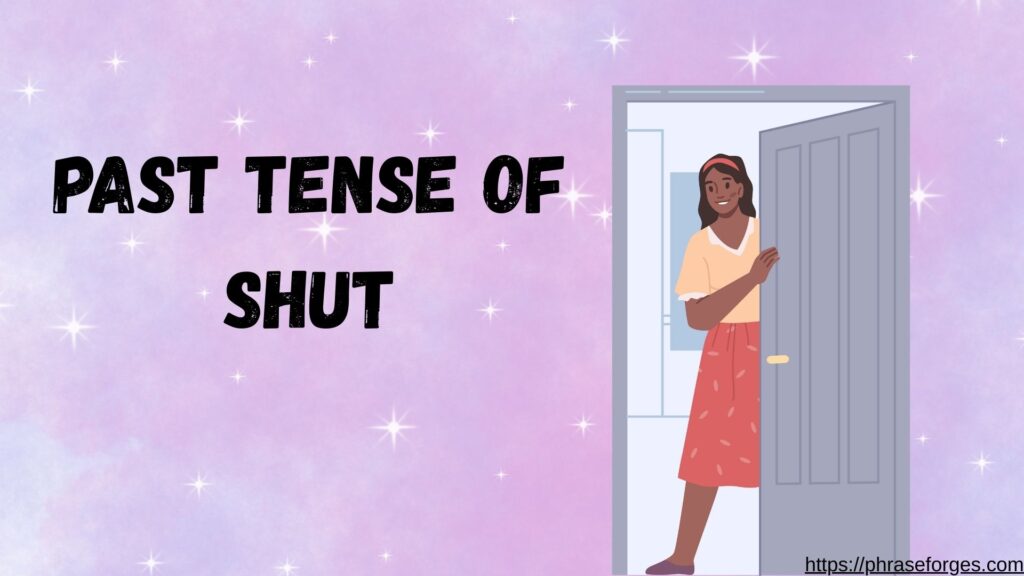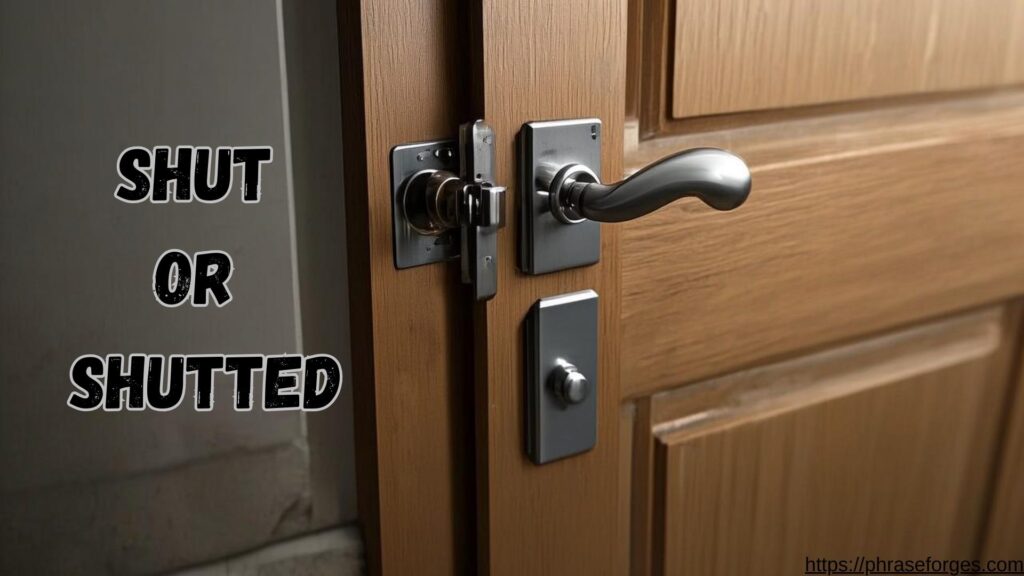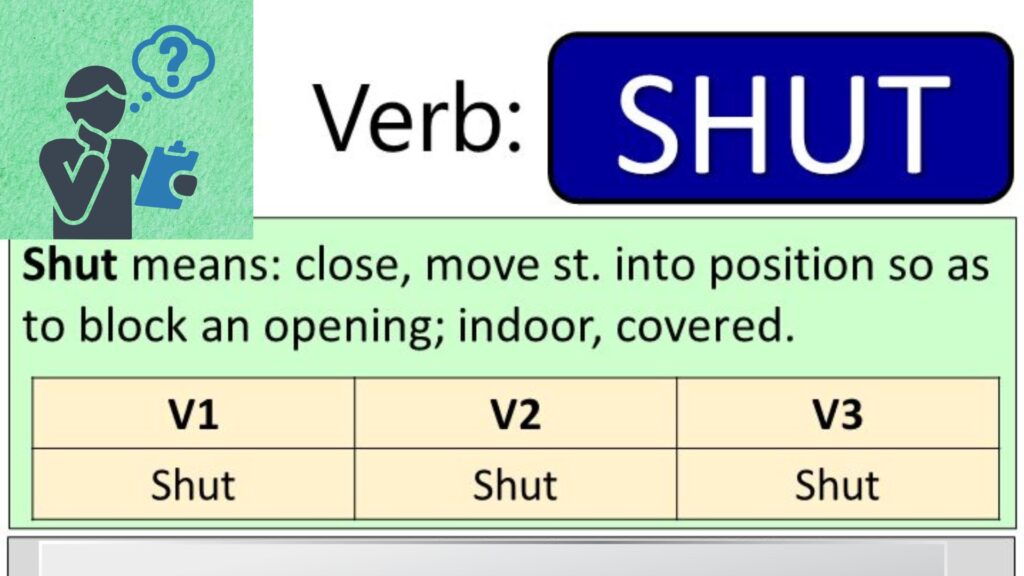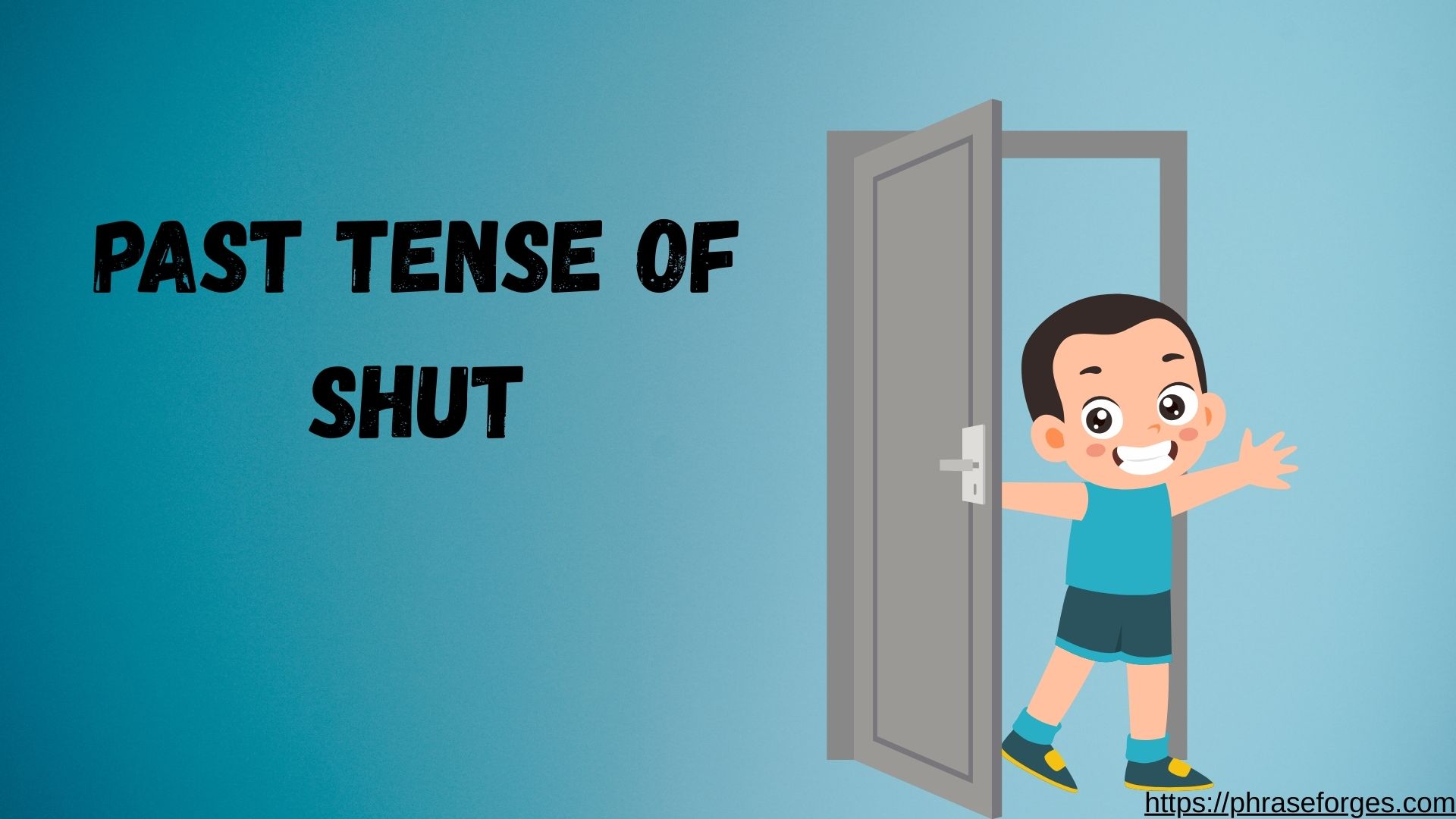Ever paused mid-sentence and wondered, “Is it shut or shutted?” You’re not alone. Even native speakers second-guess this deceptively simple verb. Let’s set the record straight with a clear, reader-friendly breakdown that explains the correct past form of shut, with examples, usage rules, and common pitfalls.
Shut Past Tense + Intro Explanation

When it comes to the verb shut, many assume that like regular verbs (e.g., walk → walked), it should follow the same -ed rule. So, we often hear learners say shutted but here’s the truth:
✅ The past tense of shut is shut, not shutted.
Just like cut, put, and let, shut is an irregular verb that doesn’t change its form in the past. So whether you’re talking about now, yesterday, or last year, the word remains the same: shut.
Simple Definition + Usage Overview
Let’s strip things down to basics:
- Shut (verb) – to close something tightly, securely, or completely.
Tense usage:
- Present: I shut the door.
- Past: I shut the window yesterday.
- Past participle: He had shut the blinds before leaving.
So, when you’re thinking in terms of shut past tense and past participle, just remember it never changes.
Clear Rules & Patterns

To lock this down in your memory, here’s a breakdown of consistent patterns related to this verb’s usage.
✅ Bulleted Rules with Do’s/Don’ts
- ✅ DO use shut for present, past, and past participle forms.
- ✅ DO keep it consistent in all tenses.
- ❌ DON’T use shutted it’s grammatically incorrect.
- ✅ DO use context clues (time references like “yesterday,” “last night,” or “already”) to show tense.
Multiple Example Sentences
The best way to grasp usage is by seeing it in real-life situations. Let’s compare the right and wrong forms in before/after examples in everyday and formal contexts.
🟢 Correct: Casual Conversation
Casey: Did you shut the kitchen window last night?
Liam: Yeah, I shut it right before the storm started.
🔴 Incorrect: Casual Conversation
Liam: Yeah, I shutted it.
❌ Nope this usage sounds unnatural and is grammatically wrong.
🟢 Correct: Formal Email Example
Subject: Office Door Left Unlocked
Hi Teresa,
I noticed the back entrance was open when I arrived this morning. I went ahead and shut the door and checked the latch. Just a heads-up in case someone forgot to close it after locking up last night.
Best,
Alex
🔴 Incorrect: Formal Email
Hi Teresa,
I went ahead and shutted the door.
❌ This incorrect verb form would come across as unprofessional or poorly written in formal communication.
Common Mistakes & Fixes
A lot of the confusion around the past form of shut stems from the natural instinct to regularize verbs.
⚠️ Common Error: Using Shutted
- Why it’s tempting: Because most English verbs form their past tense with -ed (played, cooked, watched), people think shutted fits the same rule.
- Why it’s wrong: Shut is irregular. It belongs to a small group of verbs that don’t change form.
✅ Fix It
If you’re tempted to say shutted, think of its verb cousins:
- cut → cut
- put → put
- shut → shut
Quick Reference Table
Sometimes you just need a quick visual aid. Here’s a summary table for easy quick lookup:
| Tense | Correct Form | Incorrect Form |
|---|---|---|
| Base Form | shut | — |
| Present | shut | — |
| Past | shut | shutted ❌ |
| Past Participle | shut | shutted ❌ |
| Present Participle | shutting | — |
| 3rd Person Singular | shuts | — |
Let’s Talk Context: Why “Shutted” Isn’t a Word
It’s easy to fall into the trap of thinking that shutted is real. After all, “He jumped,” “She nodded,” “They locked” all follow the same pattern. But English loves to break its own rules. The verb shut belongs to a small but stubborn group of verbs that refuse to add -ed no matter what tense you’re using.
So the next time you’re unsure, remember:
If it sounds wrong, it probably is.
Memory Trick: The “UT Rule”
There’s a neat little mental shortcut to help you remember the proper form of shut past tense and past participle.
If the base form ends in “-ut”, it often stays the same.
- cut → cut
- put → put
- shut → shut
This rule isn’t foolproof for every English verb, but it’s surprisingly effective in most casual and formal writing situations.
Scenario Examples: Applied Use
Let’s take a look at some real-world settings that demonstrate proper usage in context.
📧 Scenario 1: Email from Facilities Manager
Subject: Janitor Closet Door
Hi Marcus,
During my rounds last night, I noticed the janitor’s closet was left open. I shut it before locking up. Just wanted to log the incident in case you’re tracking evening duties.
Thanks,
Rachel
📱 Scenario 2: Text Message
Taylor:
Did you shut the car windows before the rain started?
Jordan:
Yeah, I shut them all after checking the weather alert.
📝 Scenario 3: Class Assignment
Prompt: Describe what you did before leaving for school this morning.
Student’s Answer:
I packed my backpack, checked my schedule, and shut the door quietly so I wouldn’t wake my parents.
Final Thought: Mastering Irregular Verbs

While most verbs in English follow predictable -ed endings in the past, some like shut love to break rules. These irregulars aren’t just grammar oddities. They’re part of what makes English quirky, dynamic, and sometimes confusing.
But now you know better.
So the next time you’re writing a story, sending a professional email, or texting a friend, you’ll confidently use shut no shutted in sight.
Recap
Let’s wrap up everything you’ve learned:
- Shut is one of those rare verbs that never changes, no matter the tense.
- Shutted is incorrect in all forms and contexts.
- Use contextual clues to make your meaning clear.
- Always refer back to this guide if you’re ever unsure.

